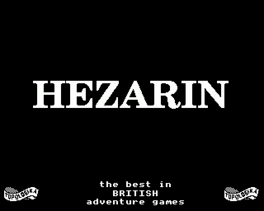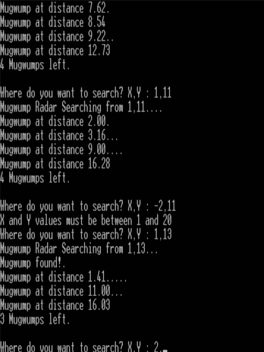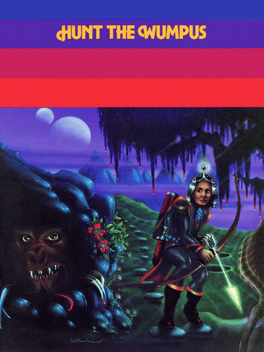New Microcomputer Games
-
Hezarin
1980
Hezarin
1980
Hezarin is a text-based adventure developed in 1980 by Steve Tinney, Alex Shipp and Jon Thackray. -
Mugwump
1973
Mugwump
1973
Mugwump is an early video game where the user is tasked with finding four "Mugwumps" that are randomly hidden on a 10x10 grid. It is a text-based game written in BASIC. The user enters a pair of single-digit co-ordinates in the range from 0 to 9 which are the x,y coordinates to scan. If a mugwump is at that location then the user is alerted. Otherwise the user is told the distance from the scanned coordinates to each of the mugwumps that are yet to be found. The game ends after ten turns or when all of the mugwumps have been found. -
Hunt the Wumpus
1973
Hunt the Wumpus
1973
star 4Hunt the Wumpus is an early computer game, based on a simple hide and seek format featuring a mysterious monster (the Wumpus) that lurks deep inside a network of rooms. It was originally a text-based game written in BASIC and has since been ported to various programming languages and platforms including graphical versions. The original text-based version of Hunt the Wumpus uses a command line text interface. A player of the game enters commands to move through the rooms or to shoot "crooked arrows" along a tunnel into one of the adjoining rooms. There are twenty rooms, each connecting to three others, arranged like the vertices of a dodecahedron or the faces of an icosahedron (which are identical in layout). Hazards include bottomless pits, super bats (which drop the player in a random location, a feature duplicated in later, commercially published adventure games, such as Zork I, Valley of the Minotaur, and Adventure), and the Wumpus itself. The Wumpus is described as having sucker feet (to escape the bottomless


